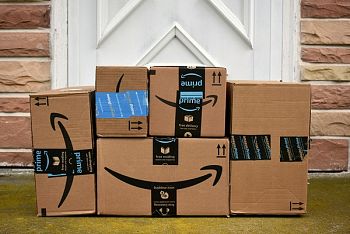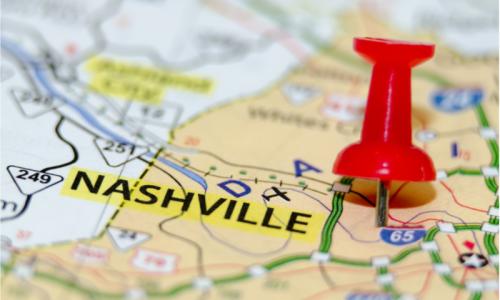The impact of Amazon HQ2 on New York and Virginia
Breaking news! Amazon broke up with New York this Valentine’s Day and will no longer build its headquarters in Long Island City. The reason? Not feeling welcome by the local administration and politicians. New Yorkers would have embraced Amazon and it’s $2.5 billion investment but “local politicians have made it clear that they oppose our presence”, as the company put it in a blog released on 14 February. The plans may be canceled, but the news’ impact remains.
New York was announced as a winner only three months ago, but the real estate market went crazy. Real estate investors fled to the area, and rent prices have gone up already. A good effect for real estate investors, though, after a 9% decline in rent between the 4th quarter of 2016 and the 4th quarter of 2017, according to a report released by Modern Spaces. Other sources say that average rent would have increased by $200 in the next one or two years. According to The Wall Street Journal, some Amazon employees bought apartments in the proximity of their future jobs way before the HQ2 announcement was published in the media. As anyone would expect, residents immediately feared a spike in real estate prices driven by speculators. A StreetEasy report actually revealed that there was a surge in prices in over 18% of Long Island properties on the market.
It all started September 2017 when powerhouse Amazon announced it had plans to build a second headquarters, called Amazon HQ2. Instead of going the natural route of assembling a real estate team to actively search for cities, vacant lots and office buildings to figure out what would be the best move, in many ways Amazon set a new real estate trend by flipping the relocation process on its head: they sent a request for proposals to any municipalities and states interested in housing Amazon HQ2. Why would they do that? Because along with Amazon HQ would come 50,000 jobs(!) and a $5 billion investment in construction/infrastructure in connection with the new headquarters.
Municipalities all over America got excited by that prospect and soon, about 240 proposals were submitted to Amazon. Not only from America but also Canada and Mexico. Some of them made a lot of fuss via-marketing – and some might say they were in for the sole reason of promoting the city, since they wouldn’t stand a chance with other cities – and, in January 2018, the Amazon HQ2 shortlist was announced with 20 finalists. Among them, the majority being in the East Coast – an expected and needed contrast to the Seattle Headquarters – with a sole city in the West Coast (Los Angeles) and one out of the USA: Toronto, Canada.
After their relocation team – comprised of real estate specialists, logistics managers and company executives – visited some of these cities several times to analyze the cities up close and in November the definitive Amazon HQ2 Announcement was finally made – with a surprise: instead of being placed in one city, Amazon new headquarters will be split into two cities – each receiving 25,000 jobs and $2.5 billion dollars - and those cities are New York City, New York and Arlington, Virginia.
This entire preamble was important to finally get to the meat of this article in which we pose the question “What are the possible impacts of Amazon HQ2 to New York and Virginia”, such different states that are about to receive a big influx of people, opportunities and attention, but also nuisance from growing pains.
Impacts of Amazon HQ2 in Virginia
We can only see good things happening in connection with the Amazon New Headquarters in Virginia. The state ranks low in Infrastructure and Economy, both of which will likely get a sizable help with the investment of $2.5 billion and 25,000 jobs.
The growing pain in the short-term will be the current residents dealing with a sudden change in lifestyle – which, quite frankly, will be a complaint made out of habit and stubbornness with change because the quality of life is nothing special in Virginia. Ranking #41 in the country, Virginia has more to gain than to lose with a sudden change in its landscape population-wise. Now, in the long-term, we might see an acceleration on the already ongoing gentrification process of Arlington and even an extension to other parts of Northern Virginia and the state as a whole. The Amazon new Headquarters itself will bring a lot of money and people to Virginia, but so will other companies that will take advantage of this growth to make a profit too – hotels, groceries, and other commercial establishments, educational companies, related businesses and vendors – and one thing pulls the other, spreading initiatives and populating areas previously less sought-after.
The truth is that Virginia was somewhat of a surprise as the pick for Amazon New Headquarters. Sure, its proximity to Washington D.C. explains quite a lot – Jeff Bezos (Amazon’s owner) has been approaching politics, even recently buying the Washington Times, whether because he has personal plans of running for Presidency or the more likely lobbying reasons that such a fast-growing disruptive company like Amazon requires. However, the choice for Arlington was still quite a surprise because of the profile of the city. For instance, it’s known that Amazon worries about energy consumption and a green lifestyle and Arlington has only 6.9% of its energy consumption coming from renewable sources – well below the 9.5% national average. Virginia’s internet infrastructure – basically the bread and butter of the company – is one of the worst in the country, ranked #43 among 50 states.
With so much to grow, especially in areas important to the company, the impacts of Amazon HQ2 can already be felt. The search for Real Estate Agents in Arlington on The OFFICIAL Real Estate Directory ®, for instance, has grown substantially since the final Amazon HQ2 announcement. And, while talking about it with some of our real estate agents in Arlington, they’ve mentioned the housing interest have already spiked well over 90% in relation to the same period last year.
And the infrastructure developments, specifically on transportation, are already underway. Virginia officials are pouring $195 million into projects to ease traffic along the George Washington Memorial Parkway and I-395, perfecting the subway line and stimulating pedestrian access. Virginia Tech has also announced a 1 billion dollars worth and 1 million square foot technology-focused campus in near-by Alexandria, which is great news for the state and its bad internet but also to Amazon. So, yes, Virginians are like “rain on me!” – The coast is clear for Amazon’s new headquarters and, at least for the foreseeable future, the impacts of Amazon HQ2 on Virginia will make it one of the states to look out for in 2019 and the next 5 years, definitively joining the best cities to invest in real estate list.
What would have been the impact of Amazon HQ2 in New York?
Now that Amazon holds back the development of its HQ2 in New York, the excitement is all gone. The activists who opposed the deal have won, even though Amazon would have brought many jobs in the area and a long term economic development. We’ve talked briefly about Amazon’s HQ2 impact in our 12 Real Estate Trends for 2019 article but now it’s time to discuss this at length.
If the deal went through, Amazon would have filled the One Court Square tower. How does the area look now? The One Court Square tower sits empty after thousands of Citigroup Inc. employees have been made redundant or moved to Tribeca Headquarters in Lower Manhattan and other locations to make room for Amazon. As a result, many restaurants around it, who depended on people’s daily lunch, ran out of business. Moreover, Amazon employees from Long Island City who work at the Staten Island Fulfillment Center spend between 2 to 3 hours commuting.
New York being picked to house Amazon’s new Headquarters was a surprise because New York is too big already. Everyone has the impression that New York is oversaturated and it sort of doesn’t need Amazon. On the company’s side, the most modern business theory is that, when searching for properties, you go just enough outside of big cities for the real estate prices to drop so you can make it a profitable operation. But it seems that New York City smartly understands that trend and, instead of being snobby and seeing itself as self-sufficient, went head-in this contest to make sure the city continues growing and keeps on top of the game. It’s a genius move as it will maintain NYC at the forefront of the country (and the world) for a long time.
But as genius as it is, it’s also bold and dangerous. When you are already that big, the number of challenges such a huge additional influx of people brings is great. New York has been enjoying a responsible growth ever since the 1990s and this has the chance to either advance three steps forward at once – or completely change the direction and create/explode a nasty real estate bubble. Housing prices are already high – what changes on that area will this Amazon hq2 announcement might have brought? Amazon would have generated over 25,000 high-paying jobs - an average pay of $150,000 dollars a year. On top of this, Amazon’s new headquarters would have further pushed gentrification of a few neighborhoods with not such a good reputation.
One of Amazon’s biggest concerns is inequality due to its experience in Seattle where homelessness is a big problem, and New York already faces that same issue. Long Island City, the Queen’s area chosen to receive Amazon’s new headquarters, was pretty much an industrial zone but in recent years has been shifting into a residential spot for people running away from the token crowded New York scenario. What such a huge influx of people might have meant to the area?
Renting is already pretty high with an average rent of $2,450 a month making it already the priciest Queen’s neighborhood, and with Amazon HQ2 arriving, it’s likely that a lot of owners will try and sell their properties to take advantage of the development, which will push an even higher price hike and, ultimately, bring inequality with nearby neighbors not able to pay for the price of products influenced by the overall cost of the area. What does that mean? Long Island City could quickly mirror Manhattan prices.
Besides the housing issue – but connected to it – there’s a zoning issue with the schools operating at 200% capacity, and the lack of commercial services in the area in comparison with the population growth expected by the arrival of so many people - don’t forget that aside from workers, there might have been families with children, too.
The good thing is that the New York Government doesn’t have to worry about the above anymore. If anything like this happens again in the future, time-tested measures (by New York, even) of rent control and low-income housing projects can help soothe the process and keep the city afloat, relatively equal and fair. And you could say that by not being the biggest thing around, Long Island City won’t be so crowded, as investments and people will likely spread around easier through Manhattan and even other boroughs. But considering the type of investment made by New York in comparison to Virginia (about $100 million less) and the issues numbered here, it seems that it’s more of a political problem of dealing with society, pushing and enforcing laws and regulation and correctly assigning investment to the correct areas, than an administrative problem of executing goals and making financial and personal investments that you hope it pays off but never really know what will become of it.
In conclusion, if New York wants to understand how to deal with its future, it needs to take a look at its past. They know the way to greatness. They know what made them New York. A sort of western world capital, it upheld – through the ups and downs – its vocation for inclusiveness, hard-work ethic and culture (whether erudite or urban). We believe that’s all it takes to continue in the path of growth.
Whatever happens, we are eager to see how Virginia and New York will get transformed because the outcome will definitely transform not only the way other companies do relocations but the country itself. If Amazon’s operations reach Western Europe and Latin America faster due to its position in the East Coast, it will be an important victory for American exportation, which has an effect on the external policy realm and on the internal economy as well. Amazon’s victory will be the victory of the American people!








Comments